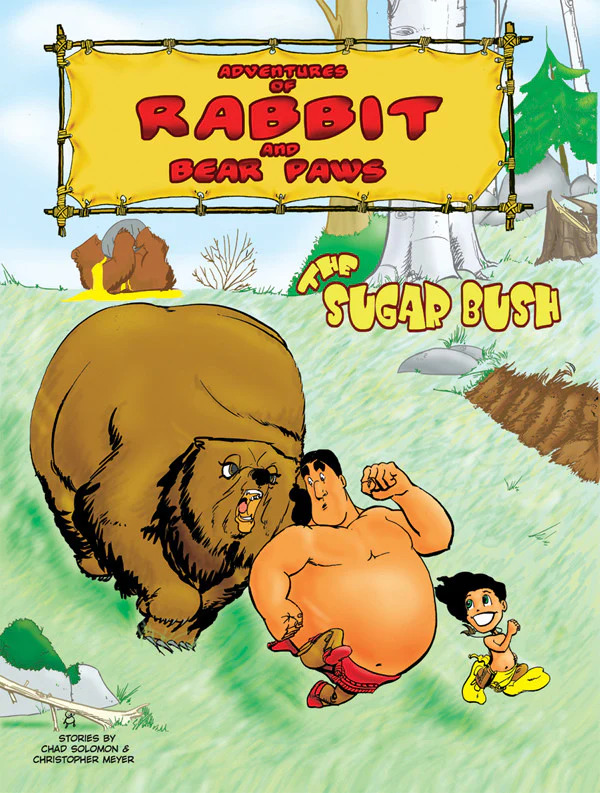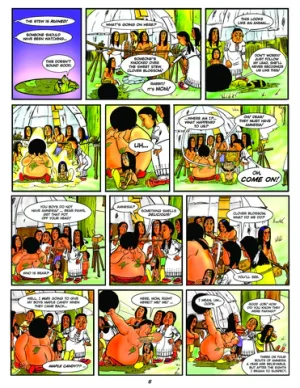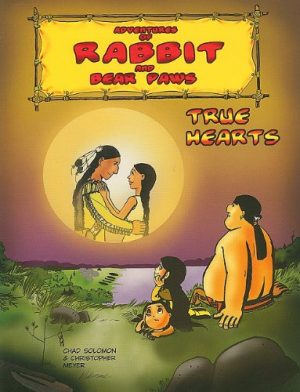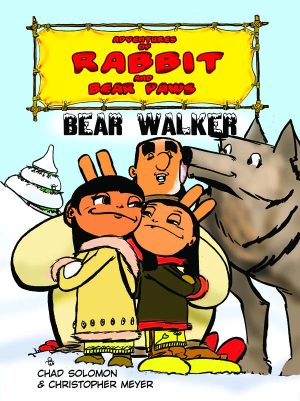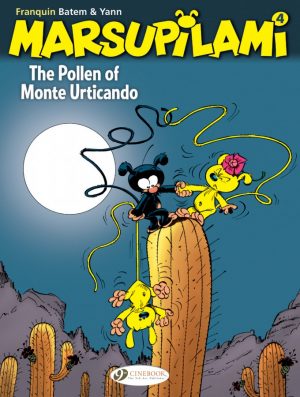Review by Frank Plowright
Rabbit and Bear Paws are characters used by writer and artist Chad Solomon to raise awareness of Native American culture among American children. It’s based on the teachings of the Seven Grandfathers on how to live a good life as passed down over the centuries to the Anishinaabe people. A series of six graphic novels, and additional illustrated books for children, have featured his characters.
To get the obvious out of the way first, Rabbit and Bear Paws owe a huge debt to Asterix and Obelix. Not only is the idea of one small brother and one large brother visually comparable, writers Solomon and Christopher Meyer hammer home the similarity by the design of the opening pages. A map is accompanied by a description of the times and area, in this case 18th century North America near the Great Lakes, followed by a page introducing the main cast.
Despite the way they look, Rabbit and Bear Paws are actual brothers, Bear Paws at ten the size of a large adult, growing up among the Ojibwa People, and via the use of their father’s spirit powder they’re able to transform themselves into animals. It’s a vehicle for Meyer and Solomon to pass on legends, in this case that of Nanaboozhoo, who saved assorted to species to repopulate the world after a flood in much the same way as Noah. The method of actually reviving the world, though is engaging and different.
During the 1700s the British and the French occupied what’s now Canada and Eastern USA, and our heroes become involved with British troops, characterised as dim, but aggressive, and the main thrust of The Sugar Bush becomes how they can be stopped.
Solomon’s cartooning is individual, but eccentric, the proportions applied to the main characters never quite fitting in with everyone else, but he has a good eye for detail and for choreographing comedy.
The trouble with styling your project so obviously after a globally successfully series is that comparisons are inevitable. While The Sugar Bush is entertaining, and the plot stands up, it’s nowhere near as good as its inspiration, although the comfort ought to be that the early Asterix graphic novels didn’t match later standards. Why this is called The Sugar Bush is never explained either. The adventures of Rabbit and Bear Paws continue with Tall Tale.
